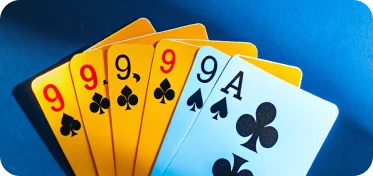Poker Rules
The goal of poker is to collect the best combination of cards or force opponents to fold their cards to win the pot. The game is played with one deck of 52 cards. The basic combinations from highest to lowest are: royal flush (10, Jack, Queen, King, Ace of the same suit), straight flush (five consecutive cards of the same suit), four of a kind (four cards of the same rank), full house (three cards of the same rank and two cards of another), flush (five cards of the same suit that do not form a straight), straight (five consecutive cards of different suits), three of a kind (three cards of the same rank), two pairs (two cards of the same rank and two cards of another), pair (two cards of the same rank) and the highest card (if the players do not have combinations, the player with the highest card wins).
The game begins with mandatory bets (blinds or ante). Players make their bets starting with the first player to the left of the dealer. Betting options include checking (passing without betting), betting (betting a certain amount), calling (matching an opponent's bet), raising (increasing the bet), and folding (folding and leaving the round). The game is played in several stages: in the first stage, players are dealt two cards (hole cards), then three community cards are dealt (the flop), a fourth community card (the turn), and a fifth community card (the river). Players use their hole cards and community cards to form a hand.
A player wins if they have the best hand at showdown or if all opponents have folded. If two or more players remain after the final betting round, they reveal their cards and a winner is determined.

